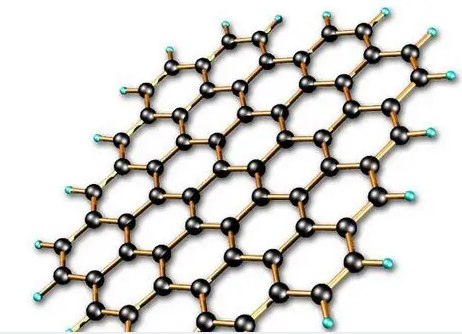The power battery of future new energy vehicles-graphene power battery
Graphene has always been the thinnest and stiffest nanomaterial globally, with extremely low resistivity and swift electron migration. Graphene power battery is a new type of power battery developed by using the characteristics of rapid and massive shuttle movement of lithium ions between the graphene surface and the electrode.
Graphene is a two-dimensional material with a hexagonal honeycomb lattice composed of carbon atoms and sp2 hybrid orbitals. It has a thickness of only one carbon atom. Graphene is currently the thinnest but stiffest nanomaterial in the world. It is almost entirely transparent and only absorbs 2.3% of light. It is also the world's smallest resistivity material. As a new type of nanomaterial with the thinnest, stiffest and strongest electrical and thermal conductivity, graphene has attracted much attention since its inception in 2004.
Taking the power battery field as an example, graphene is a positive and negative electrode material for lithium power batteries with good application prospects. Simultaneously, the weight of the graphene polymer power battery is only 50% of the traditional power battery, and the cost will be 77% lower than that of the lithium power battery. It takes less than 10 minutes to charge the graphene lithium power battery once in the performance point of view. Because of its unique characteristics, graphene is called a "magic material," and scientists even predict that it will "completely change the 21st century."
To discuss the power battery of new energy vehicles in the future, the most reliable and most concerned power battery is the graphene power battery. The interpretation of some professional perspectives is "translation": There are two ways to use this material combined with lithium power batteries. One is to use graphene composite materials as the conductive agent of lithium power batteries, and the other is to use as the negative electrode directly. The effect is to increase lithium power batteries' activity, thereby increasing the range and charging speed of electric vehicles.
The industrialization of fast-charging graphene power batteries in the future will bring about changes in the power battery industry, which will also promote the innovation of the new energy automobile industry. The success of the experimental stage of the pristine graphene power battery will undoubtedly become a unique development point in the power battery industry. Power battery technology is the most significant threshold for the vigorous promotion and development of electric vehicles. The power battery industry is at a stage where the story of lead-acid power batteries and traditional lithium power batteries are both encountering bottlenecks. After the successful development of graphene batteries, mass production is possible. It is bringing new changes to the power battery industry and even the electric power industry.

At present, the standard ternary material lithium power battery's energy density is 180-200mAh/g, while the energy density of the graphene polymer material power battery can exceed 600mAh/g. In other words, if the power battery on the Tesla P85 is replaced with a graphene power battery of the same weight, its cruising range will reach about 1500km, which is three times the original. In addition to the high energy density, the charging speed of graphene power batteries is much faster than that of lithium power batteries, which can effectively solve long charging time. The life of graphene power batteries can reach twice that of lithium power batteries. The use of graphene power batteries will effectively reduce electric vehicles' cost, thereby enhancing market competitiveness.
Trunnano is one of the largest graphene powder producers in the world. If you have any questions or needs, please feel free to send email: sales@graphite-corp.com







